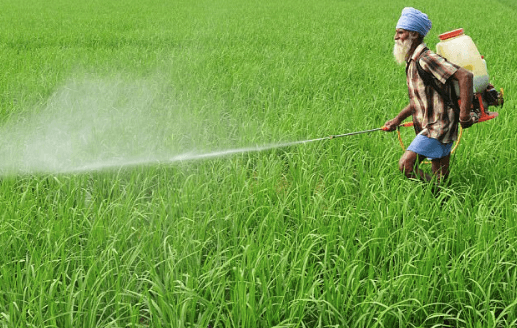Green Revolution in IndiaWhat is green revolution?Green revolution refers to a process that increases the production of food grains using the high-yielding varieties, fertilizers, pesticides, and modern equipment and technology. For example, Prof. Norma Borlaug in Mexico developed high-yielding varieties of wheat that were resistant to diseases like rust. It increased wheat production by three times within three years. Later these varieties of wheat were adopted by many countries including India. For this achievement, he received the noble peach prize. 
Green revolution in India refers to a period when agriculture production was increased tremendously using high-yielding varieties and modern tools and techniques such as tractors, pesticides, fertilizers, irrigation facilities, etc. After independence, India had to rebuild its economy and around 70 percent of the population was dependant on agriculture to make their living. The production of food grains was not sufficient as compared to the rising population. Furthermore, the agriculture was dependent on monsoon due to the lack of irrigation facilities and pesticides, and machinery was also not available to increase the output in the fields. India also had to face food crisis during the British Raj, who was only interested in promoting cash crops. India was determined to become self-sufficient in producing food grains and not to depend on other countries for food sufficiency. So, India launched Green Revolution in India in 1965 under the leadership of the Lal Bahadur Shastri and with the help of M.S. Swaminathan. M.S. Swaminathan has played a vital role in introducing high-yielding varieties of wheat in India to increase agriculture production in India. He is also known as the father of green revolution in India. He is an Indian geneticist; under his guidance and supervision, high-yielding varieties of wheat and rice were grown in the fields of Indian states. In India, the green revolution continued from 1965 to 1977. It mainly increased the food crops production in the state of Punjab, Haryana and Rajasthan and enabled India to change its status from a food deficient country to one of the leading agricultural nations in the world. Until 1967 (before the green revolution), the govt. of India was only focusing on increasing the farming land to increase food production. But, the increase in population was much higher than the food production and an increase in farming land. Consequently, the solution for this situation came in the form of green revolution and India became one of the countries where green revolution was most successful. The major factor behind the success of green revolution was the use of seeds of high-yielding and rust-resistant varieties of wheat. Green revolution mainly focuses on three basic elements that include:
Benefits of the green revolution in India:
However, according to some social activist and scientist, although it increased production, there were also some drawbacks of green revolution such as
Next TopicPrime Ministers of India
|
 For Videos Join Our Youtube Channel: Join Now
For Videos Join Our Youtube Channel: Join Now
Feedback
- Send your Feedback to [email protected]
Help Others, Please Share









